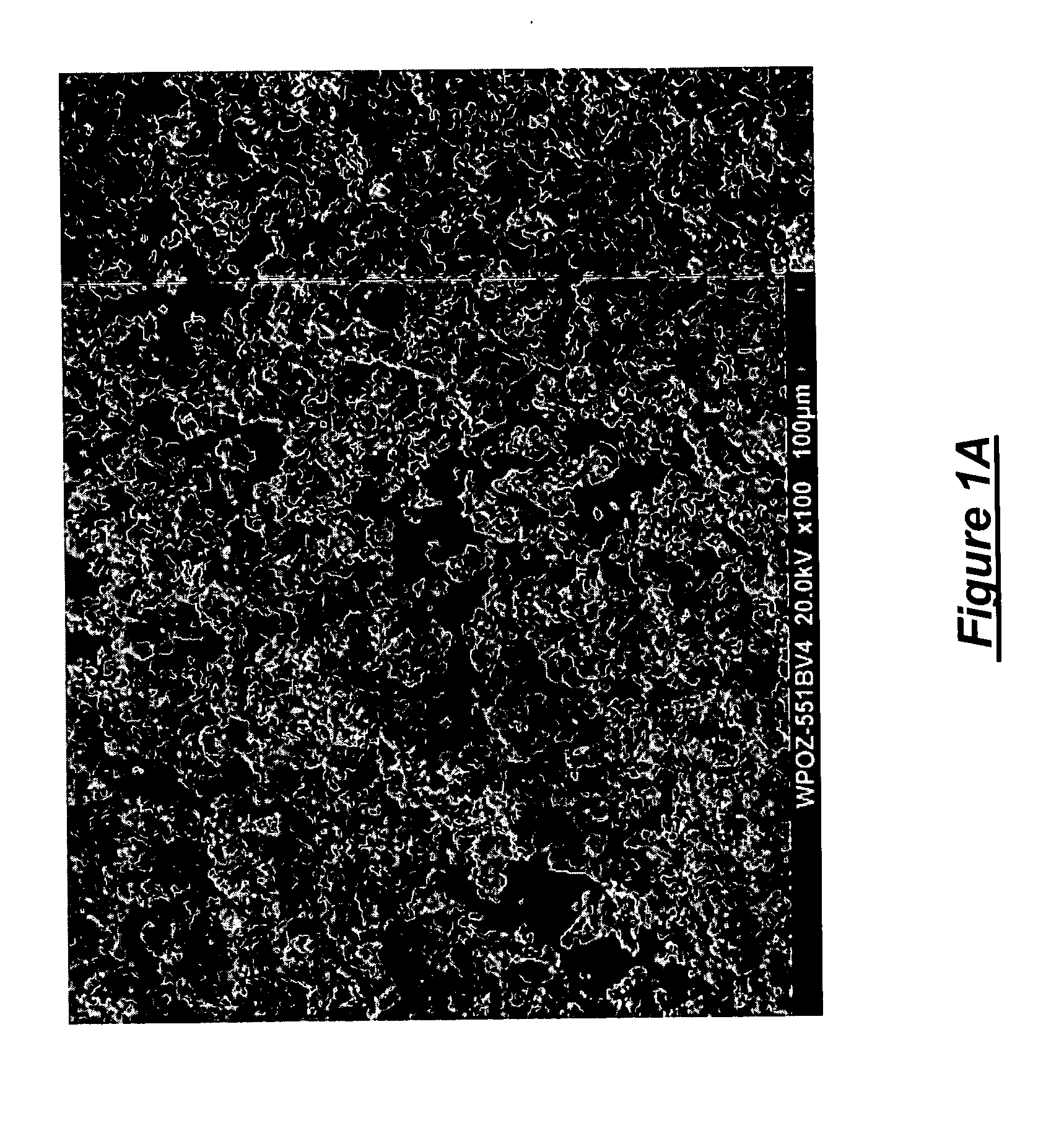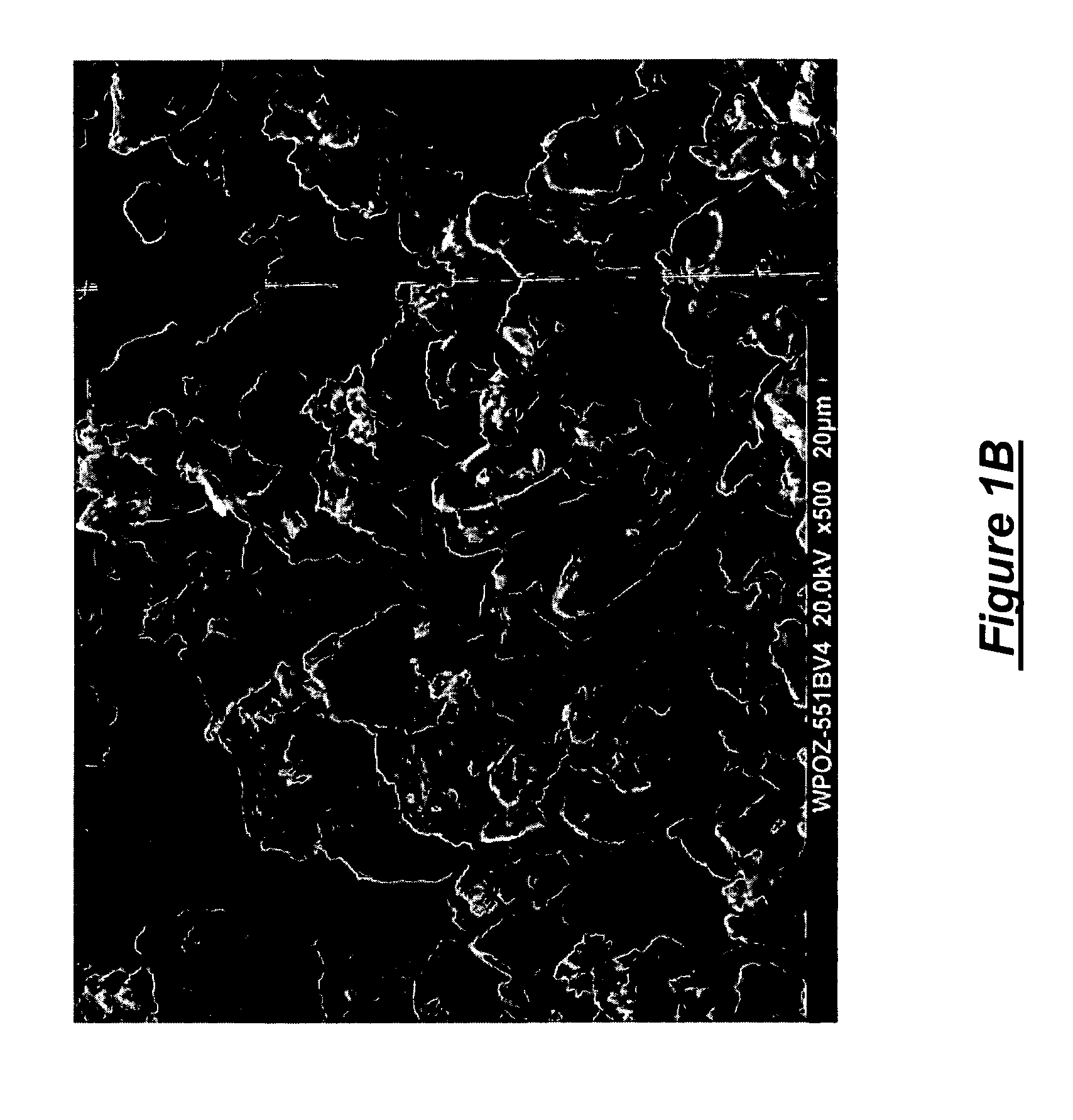Method for formation of micro-prilled polymers
a technology of micro-prilled polymers and polymers, which is applied in the direction of microcapsules, capsule delivery, and heterocyclic compound active ingredients, can solve the problems of reducing the viscosity affecting the safety of the drug ingredient, so as to achieve the effect of reducing the viscosity
- Summary
- Abstract
- Description
- Claims
- Application Information
AI Technical Summary
Benefits of technology
Problems solved by technology
Method used
Image
Examples
example 1
[0029] Poloxamer 188 was atomized in an internal mixing two fluid nozzle from Spray Systems, Inc. number 1 / 4J-SS-PF50264-80100DF+245-SS and sprayed into a counter-current prilling tower. The atomization conditions were as noted in Table 2 below. The atomizing gas, nitrogen, was maintained at 96° C. The product collected from the prilling tower was then sieved though 140 and 270 mesh screens to determine the percentage retained on the 140 mesh screen and the percentage on the 270 mesh screen. Representative results are shown in Table 2. Notice the sample prepared at a poloxamer temperature of 149.6° C. yielded a product wherein the nominal average particle size was less than the 53 microns of the mesh. Preferably for the present invention the plurality of particles obtained have an average nominal diameter of less than or equal to 106 microns. For certain atomizing conditions this may require sieving of the obtained product.
TABLE 2PoloxamerPoloxamerAtomizingflow rate% retained% ret...
example 2
[0030] Poloxamer 407 was atomized in the internal mixing two fluid nozzle from Example 1 and sprayed into a counter-current prilling tower. The atomization conditions were as noted in Table 3 below. The atomizing gas, nitrogen, was maintained at 88° C. The product collected from the prilling tower was then sieved though 140 and 270 mesh screens to determine the percentage retained on the 140 mesh screen and the percentage on the 270 mesh screen. Representative results are shown in Table 3. Note that the poloxamer run at a temperature of 157.3° C. had a particle size distribution such that over 50% were less than 53 microns.
TABLE 3PoloxamerPoloxamerAtomizingflow rate% retained% retainedtemp., ° C.pressure, psigkg / hron 140 meshon 270 mesh158.412023.51346138.6120554878136.4120211549135.3150504980153.4120261343157.312025942
[0031] To compare the poloxamer prepared according to the present invention to the micro-milled poloxamer in a pharmaceutical preparation a three fluid nozzle, Nubi...
PUM
| Property | Measurement | Unit |
|---|---|---|
| diameter | aaaaa | aaaaa |
| diameter | aaaaa | aaaaa |
| molecular weight | aaaaa | aaaaa |
Abstract
Description
Claims
Application Information
 Login to View More
Login to View More - R&D
- Intellectual Property
- Life Sciences
- Materials
- Tech Scout
- Unparalleled Data Quality
- Higher Quality Content
- 60% Fewer Hallucinations
Browse by: Latest US Patents, China's latest patents, Technical Efficacy Thesaurus, Application Domain, Technology Topic, Popular Technical Reports.
© 2025 PatSnap. All rights reserved.Legal|Privacy policy|Modern Slavery Act Transparency Statement|Sitemap|About US| Contact US: help@patsnap.com



